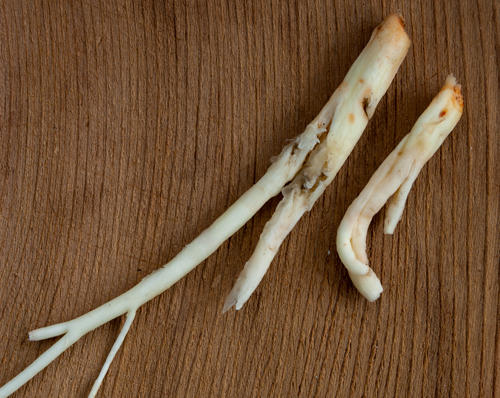Bitterroot, one of the Three Roots
Lewisia Rediviva
© 2011 by Kristopher K. Townsend. Permission to use granted under the Creative Commons Attribution-Share Alike 4.0 International license.
At Camp Fortunate on 22 August 1805, Lewis reported on an experience that George Drouillard had on the previous day. About noon, Drouillard came upon a family of six Lemhi Shoshones–an old man, a young man, a boy and three women–whom he engaged in a sign-language conversation for some twenty minutes. As the Indians prepared to continue their journey, Drouillard walked about fifty paces away to catch his own horse, leaving his gun lying on the ground where they had been talking. The young man snatched up the weapon and the whole group sped off toward Lemhi Pass, leaving their belongings behind. Drouillard followed in hot pursuit.
after runing them about 10 miles the horses of two of the women nearly gave out and the young fellow with the gun from their frequent crys slackened his pace. . . . at length Drewer overtook the women and by signs convinced them that he did not wish to hirt them they then halted and the young fellow approached still nearer, [Drouillard] asked him for his gun but the only part of the answer which he could understand was pah kee which he knew to be the name by which they called their enimies. watching his opportunity when the fellow was off his guard he suddonly rode along side of him seized his gun and wrest her out of his hands. the fellow finding Drewyer too strong for him and discovering that he must yeald the gun had pesents [presence] of mind to open the pan and cast the priming [powder] before he let the gun escape from his hands; now finding himself devested of the gun he turned his horse about and laid whip leaving the women to follow him as well as they could.
Drouillard immediately returned to the meeting-place, picked up the Indians’ abandoned animal-hide grocery sacks, and took them back to Captain Lewis at Fortunate Camp. Besides the avoidance of bloodshed by all parties, the best outcome of the incident was that Lewis learned about three unfamiliar species of edible roots–a bushel of them altogether. The Shoshones who were encamped nearby helped him sort them out, and told him how they were customarily prepared.
One root may have been a species of valerian (vuh-LEHR-ee-an), such as Valeriana edulis (vuh-leh-ree-AYE-nuh ed-YOU-lis), or edible valerian. The second root in the bag, which Lewis would find in bloom at Travelers’ Rest on the return trip in early July 1806, was undoubtedly the bitterroot plant, although Lewis himself never got around to calling it that, at least in writing. The third root proved later to be a western spring beauty.

